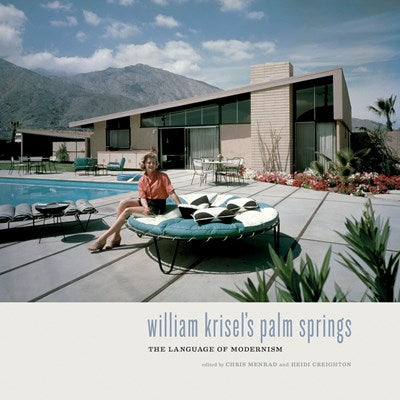"William Krisel’s Palm Springs: The Language of Modernism is a wonderful book for readers like me, casually interested in residential architecture and its uniquely California development after World War II. In a very personal context, the reader learns of Bill Krisel’s contributions and visions leading to the evolution of Southern California Midcentury Modernism in the Palm Springs/Coachella Valley. Well-documented through narrative, first hand accounts, photographs, and drawings, a history emerges of primarily residential, but also commercial architectural exploration at a time of economic optimism. It chronicles Bill Krisel’s passion for a broader and more holistic residential experience, accessible to the rapidly growing middle class. Here the human spirit can flourish through integration of outdoor and indoor living. Each new suburban residential tract could reflect the local geography and environment and be affordable. Light and lighting, shadow, vista, water, planting, warm natural color, furniture, and textured grounds encourage movement and community. This becomes the new residential experience for many. The dynamic nature of the development of Midcentury Modernism is well developed in a style and language that can be appreciated by the general reader such as myself. I grew up in a Northern California Midcentury Modern residence (Carter Sparks, 1962.) The house my parents built expanded the boundaries of living, sharing many elements with what is seen here---the extensive use of glass walls and sliding doors, decks and patios, sloping roofline, concrete block, and privacy walls, without curtains anywhere! Often friends and neighbors reacted to my parent’s suburban home with comments such as “interesting†and “different.†Now, these elements of daily living, so clearly outlined here, are taken for granted in California. This book brings to focus many of the forces that prompted this visionary architect to explore and permanently change California living in new and dynamic ways. It is a joy to read." -Stephen Follansbee

